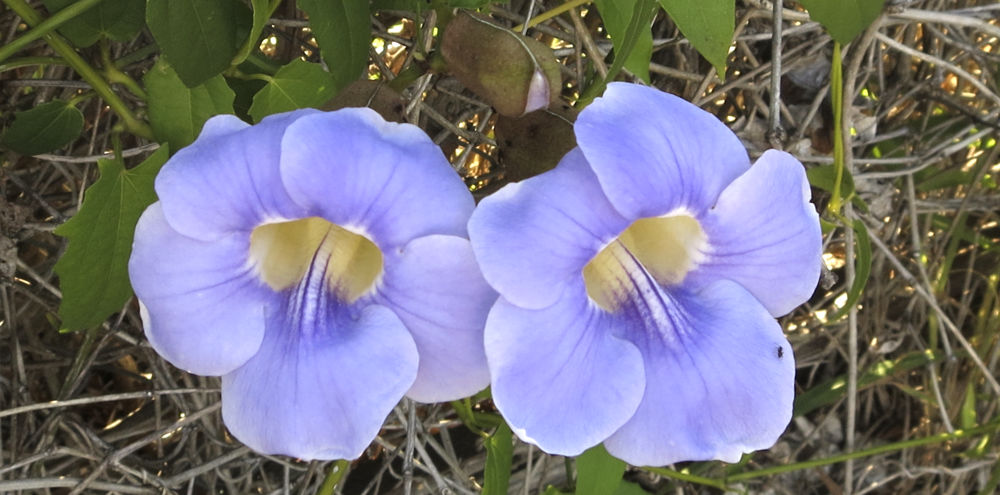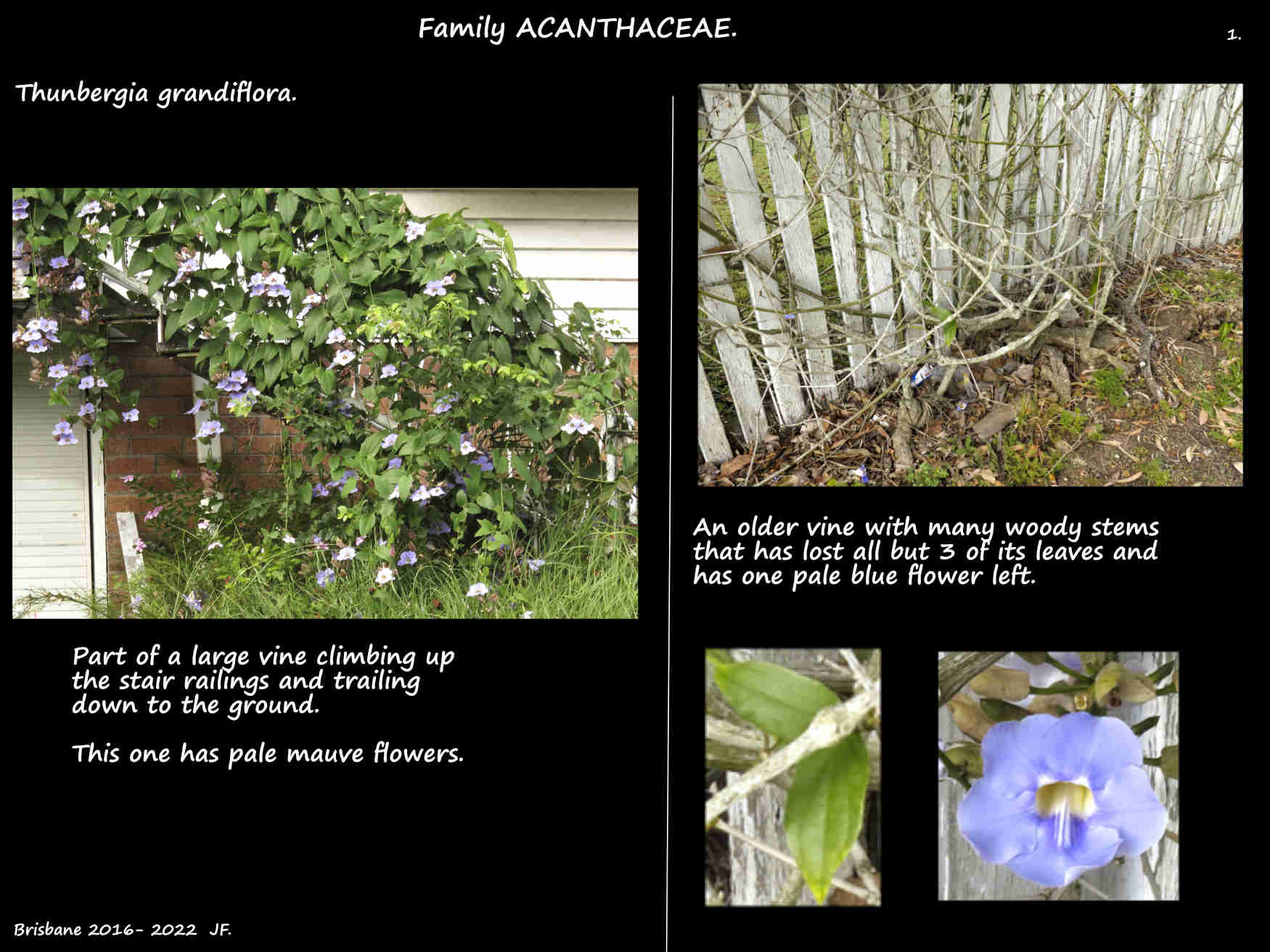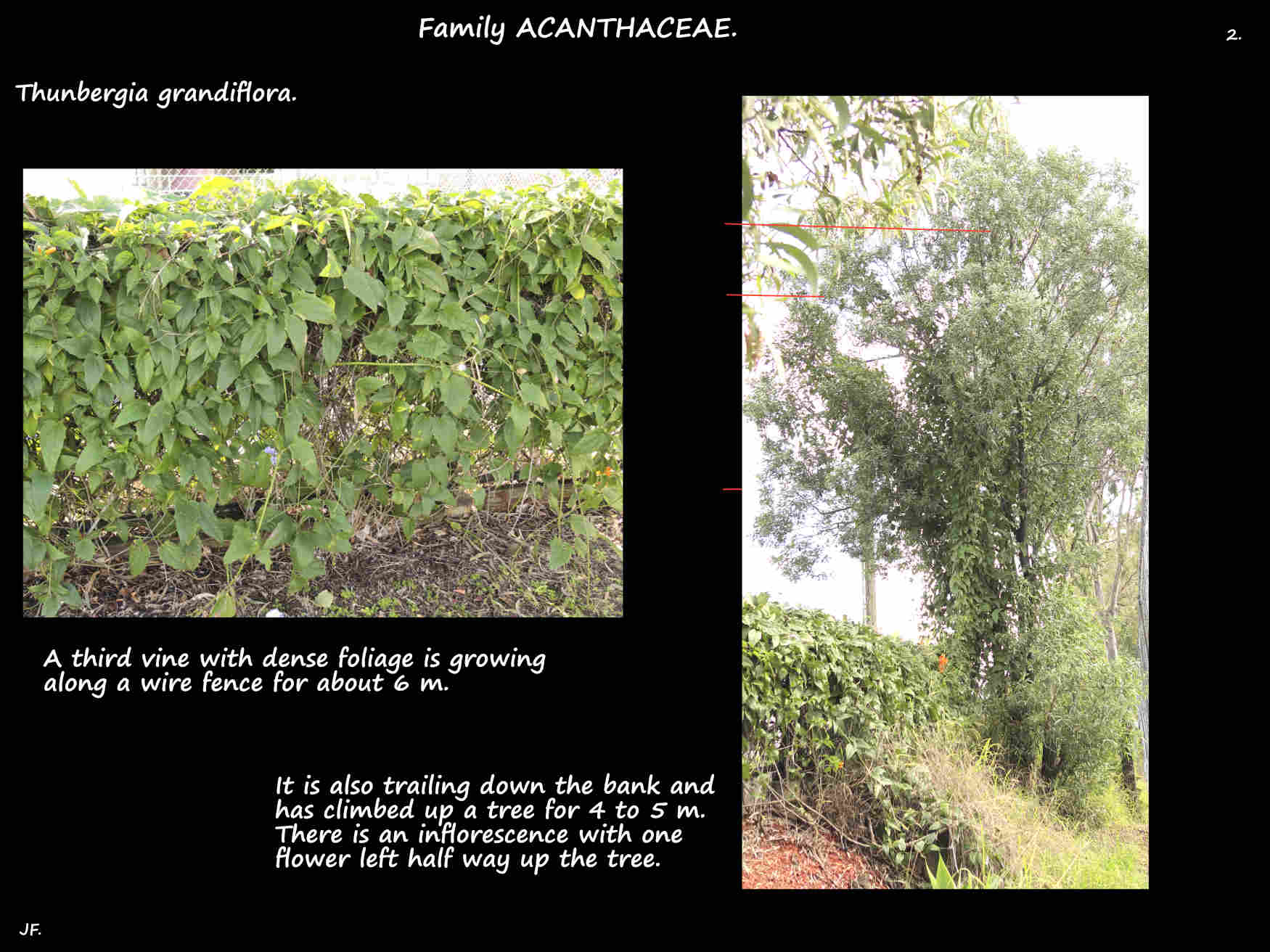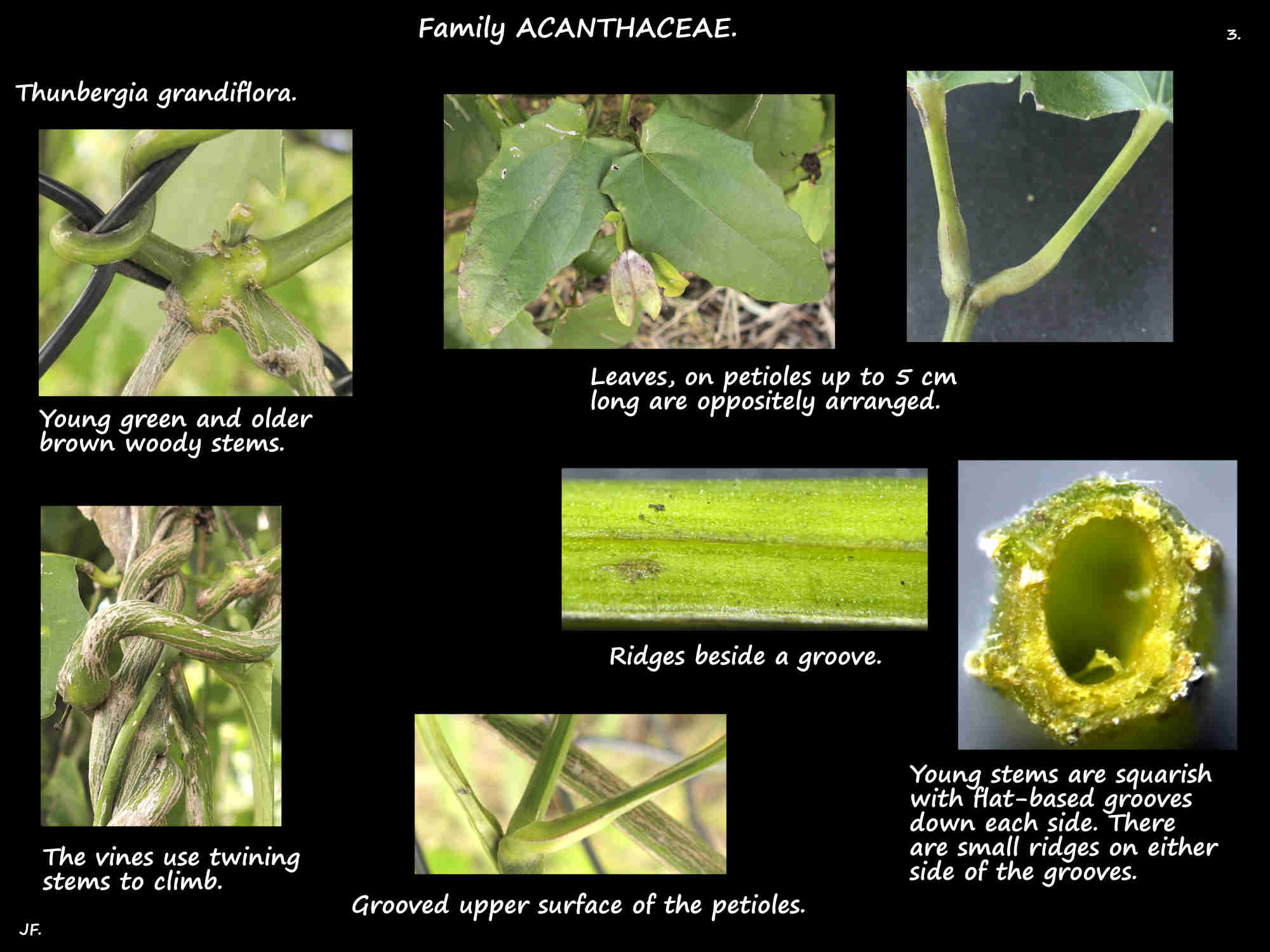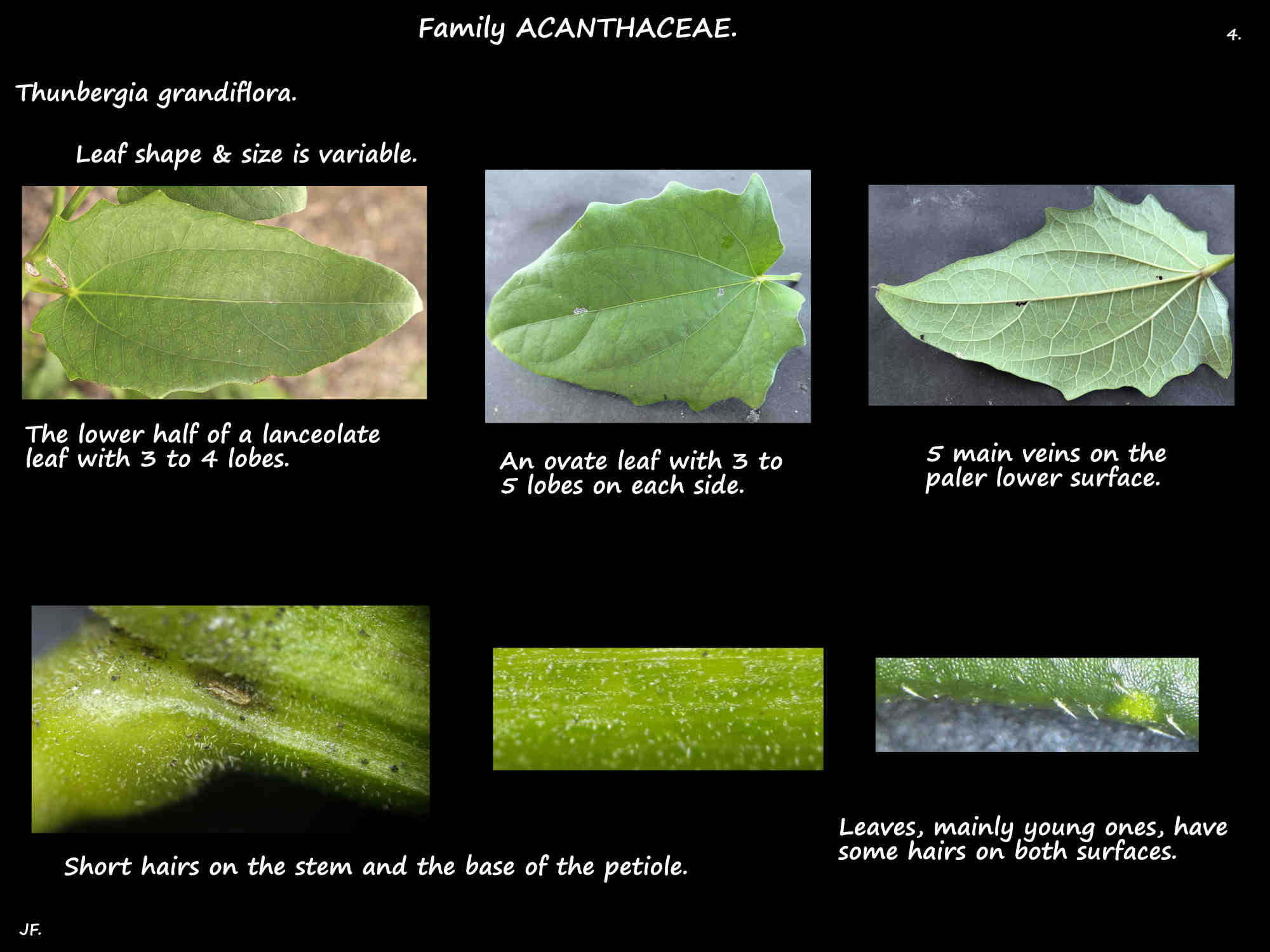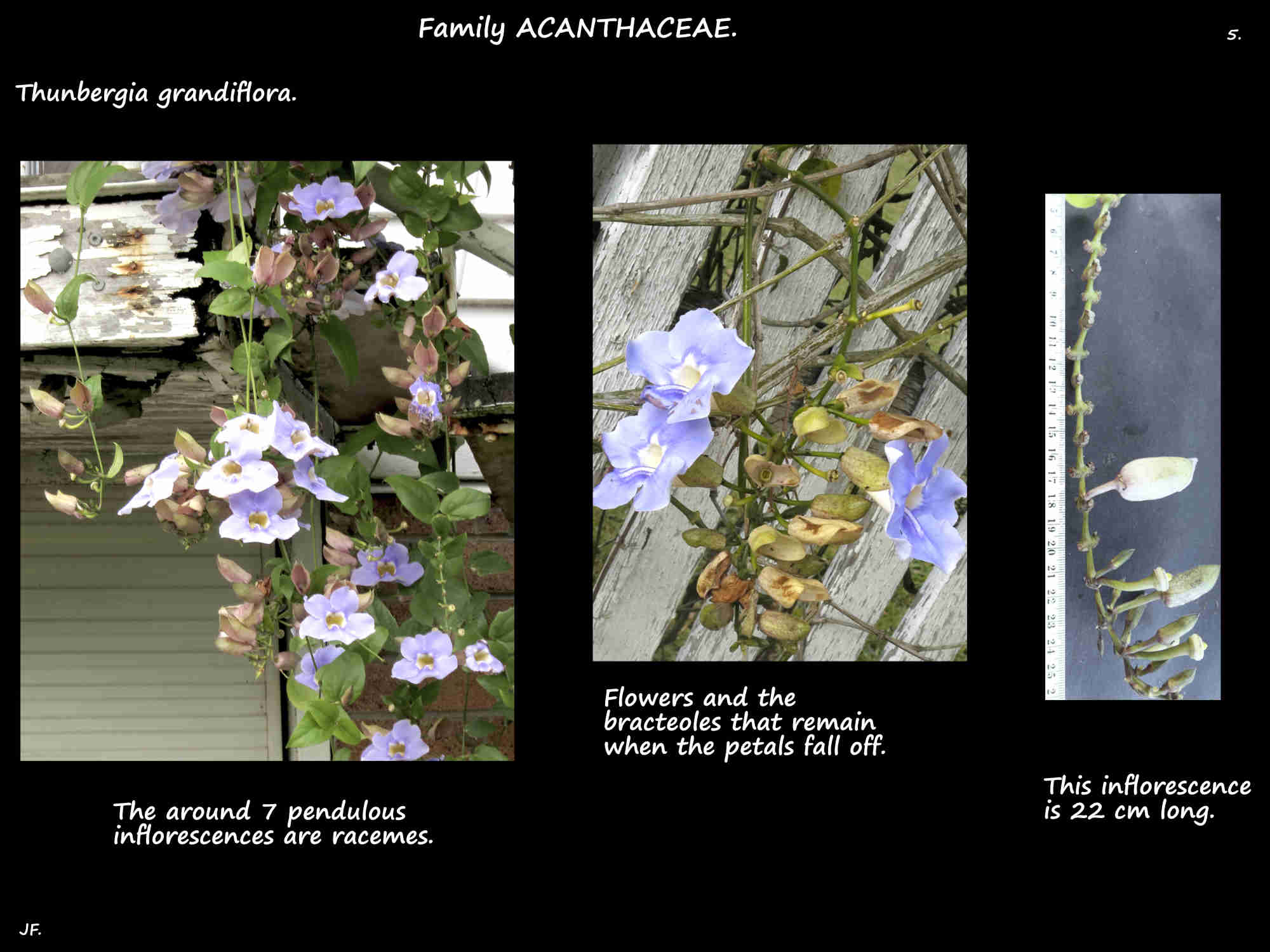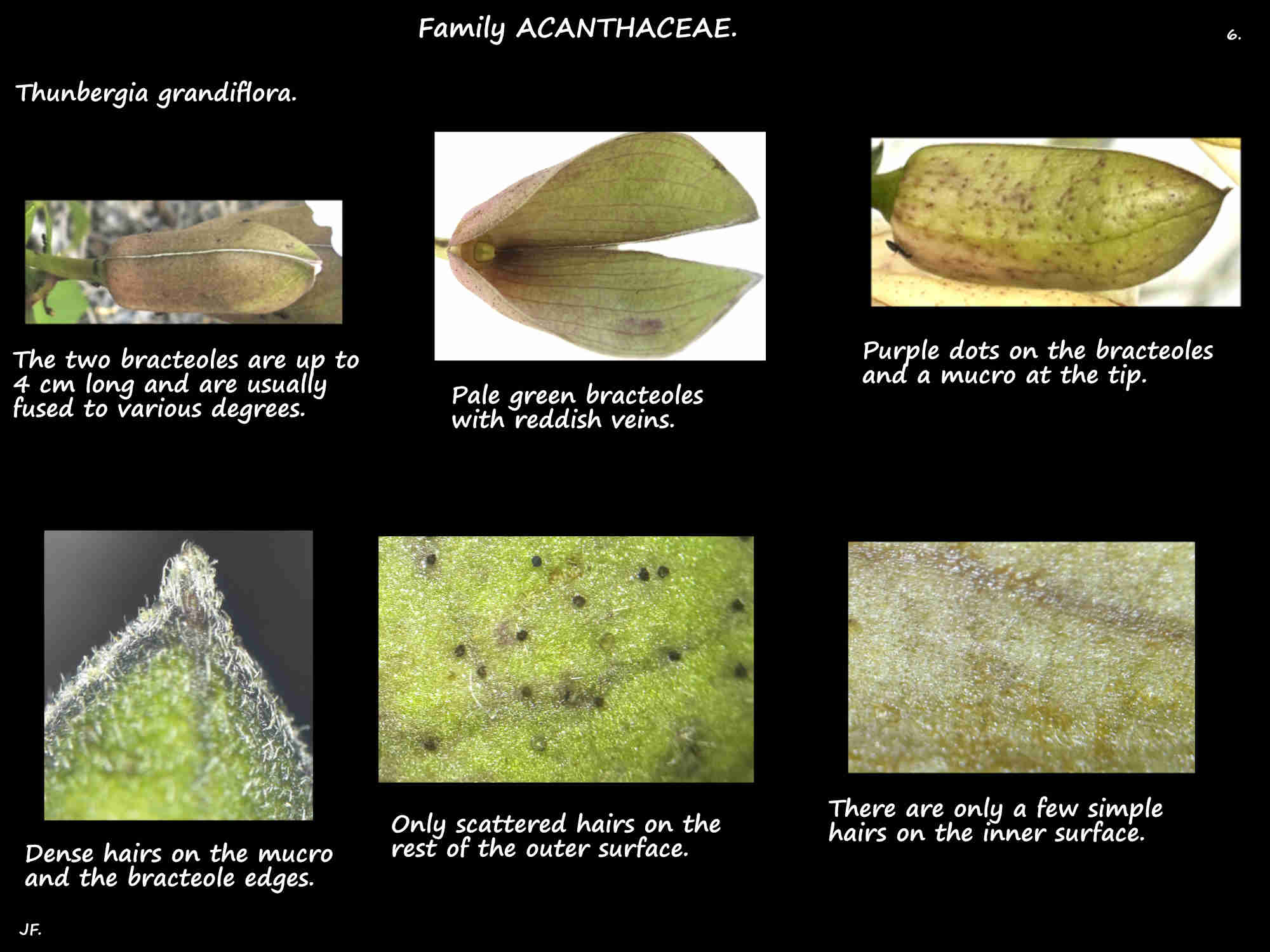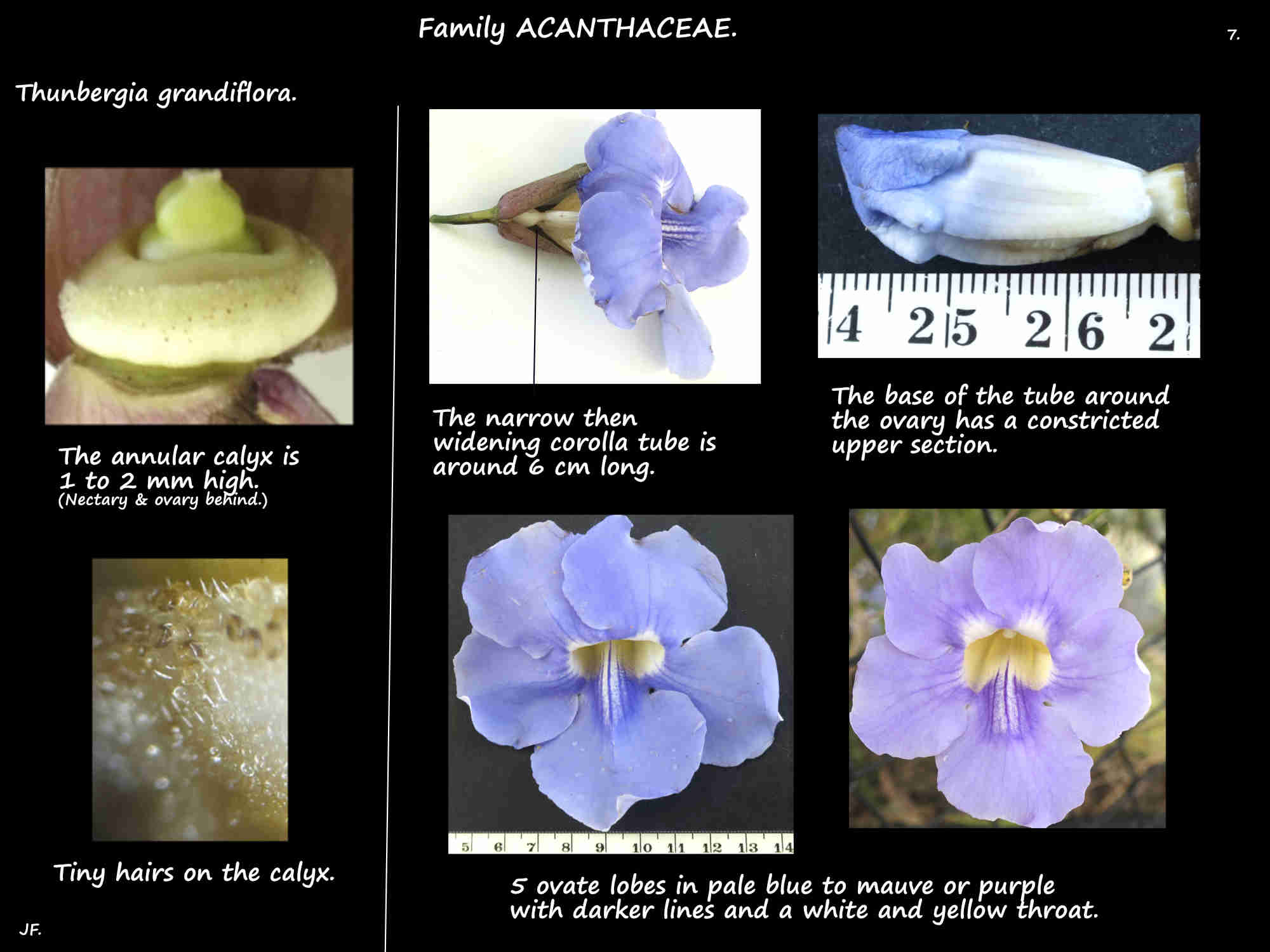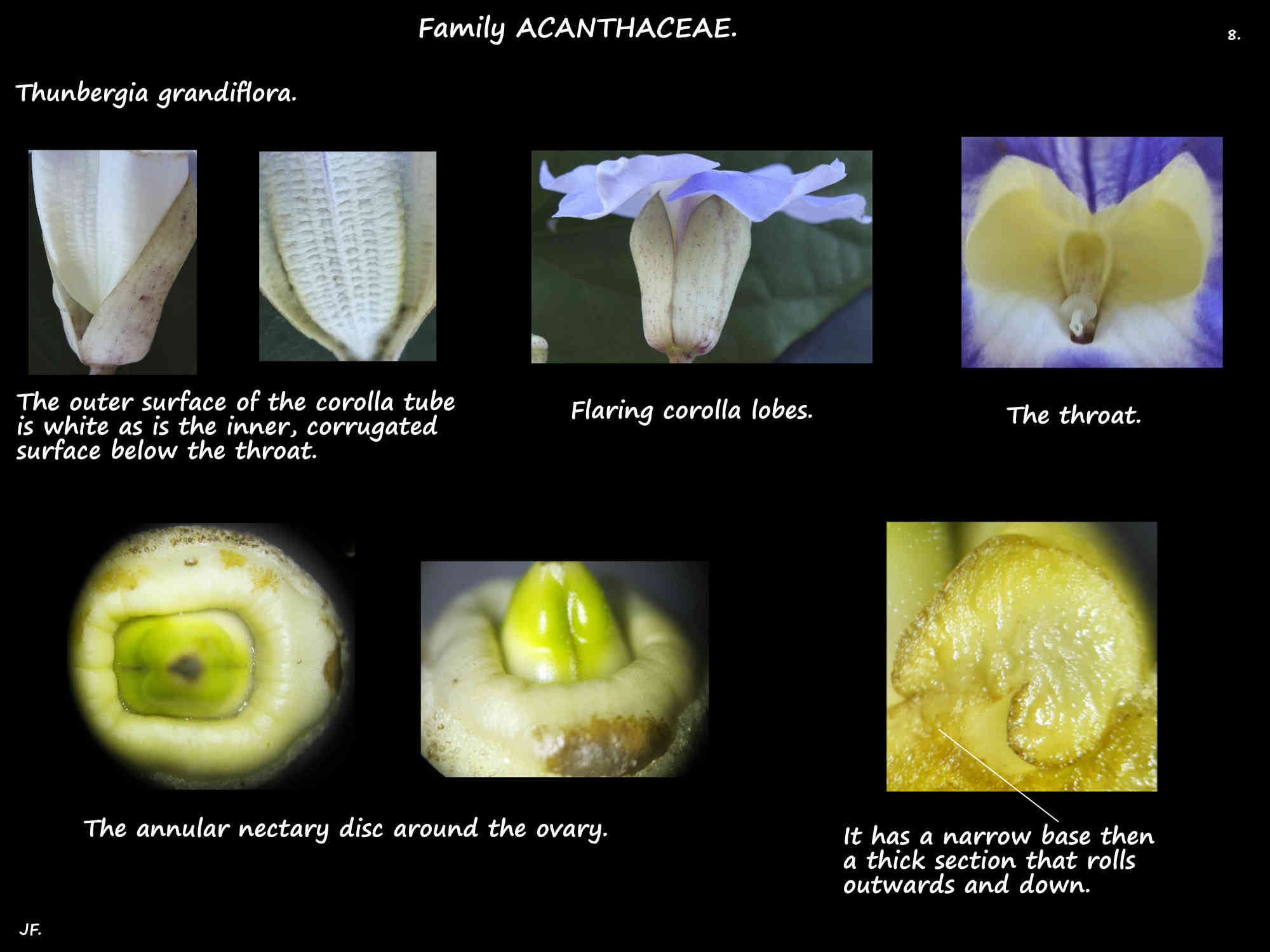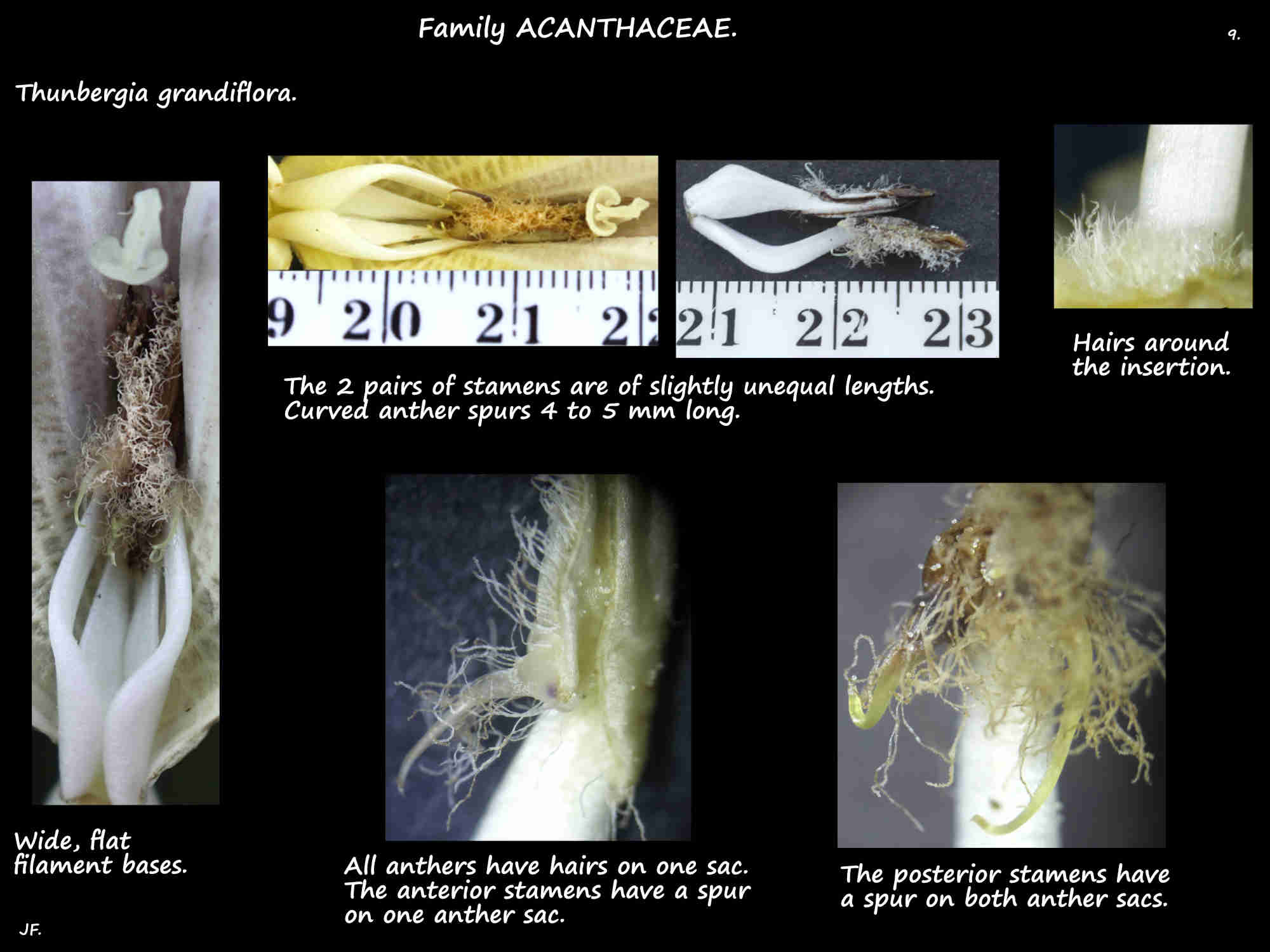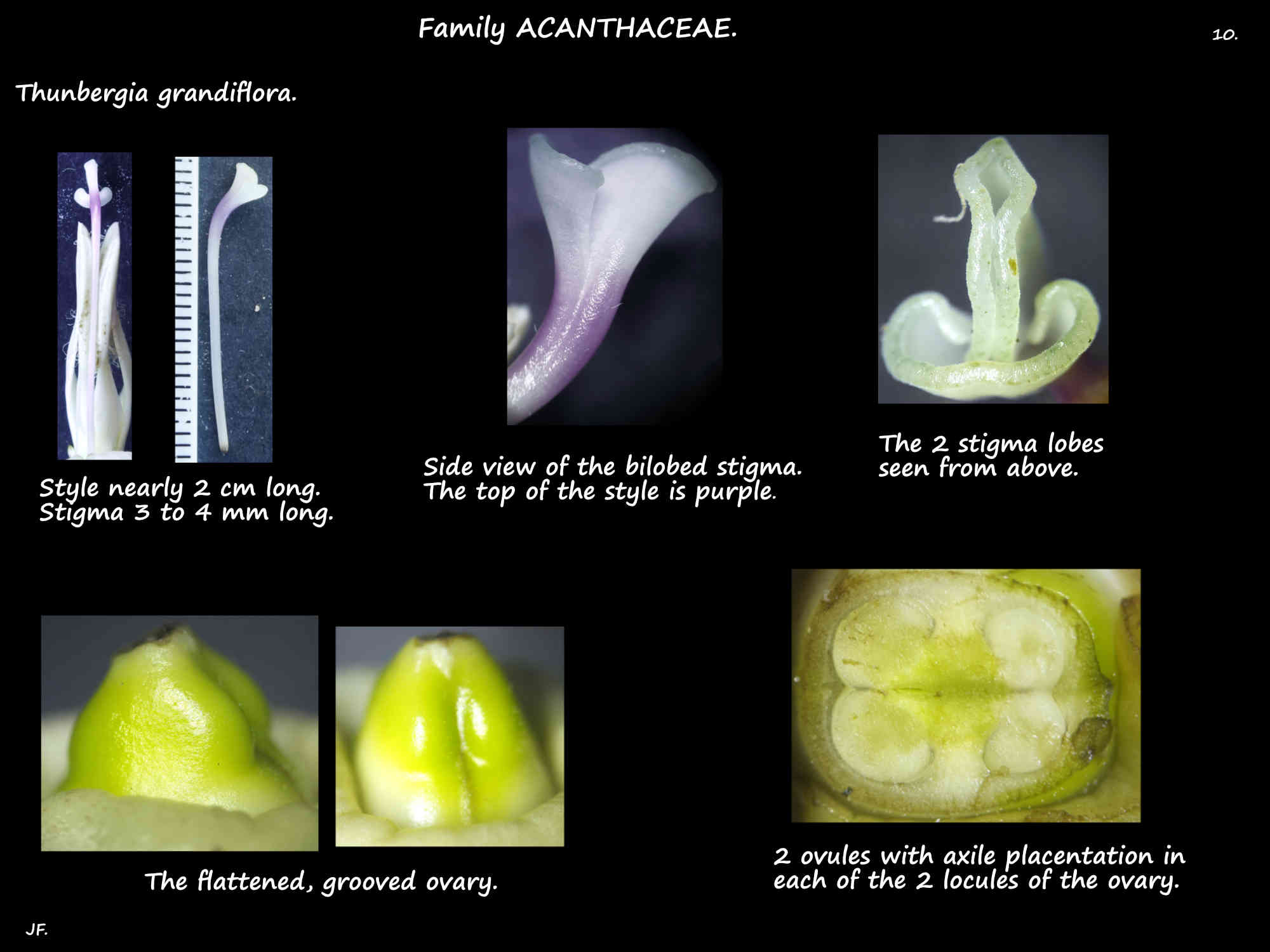Thunbergia grandiflora.
Blue Thunbergia or Blue trumpet vine is naturalised in Australia.
It has been cultivated as an ornamental but is an environmental weed in Queensland.
They are vines growing from a wide root system with large tubers.
Stems up to 15 or 20 m long climb by twining but will trail or creep when there is no support.
Young green stems are square and older stems are brown, woody and more circular.
Young stems have simple hairs.
The opposite leaves are on grooved petioles up to 5 cm long.
The blades, of variable shape can be over 20 cm long and around 14 cm wide.
They can be ovate with a rounded base or lanceolate with a hastate base (outward pointing lobes).
The edge can be smooth, have teeth or the lower half may have up to 5 lobes on each side.
Both surfaces have some hairs.
The pendulous inflorescences are racemes (unbranched and with flowers on pedicels that open from the bottom first).
They can be terminal or axillary with peduncles up to 8 cm long.
The trumpet-shaped flowers are on pedicels up to 5 cm long.
Just under the flower are 2 bracteoles (often referred to as bracts) around 4 cm long.
They may be free but are usually fused to various degrees.
They can be ovate or oblong and mostly with a pointed tip that has a mucro.
They are green with small purple spots and have some hairs on both surfaces.
The five sepals are fused into a ring 1 to 2 mm high with a flat top and minute hairs.
The corolla has a tubular section around 7 cm long and 5 flaring lobes.
The basal 3 mm long section of the tube curves around the ovary and narrows at the top.
Above this is a tubular section up to 6 cm long that becomes wider towards the top.
The 5 lobes are pale blue or mauve with darker lines and the throat is yellow and white.
The ovate lobes, of slightly unequal size are up to 4 cm long.
The smooth outer surface is white.
The 4 stamens insert into the throat and are in 2 pairs of slightly unequal lengths.
The lower twisted part of the filaments is wide and flattened.
All the anthers have hairs on one of the two thecae or pollen sacs.
The anthers of the posterior pair of stamens have a spur on the base of both sacs.
The anterior pair of stamens only have a spur on one anther sac.
The rigid 3 mm long spurs are curved.
There is an annular nectiferous disc around the base of the ovary.
The ovary, of 2 fused carpels has 2 locules each with 2 ovules with axile placentation.
The single long style has a stigma of two unequal lobes.
The fruit are spherical capsules around 17 mm long with a flattened beak about 2.5 cm long.
There are simple and glandular hairs on the capsule.
The up to 4 flat brown seeds are smooth on one side and have scales on the other.
There are cultivars with white or deep blue flowers.
J.F.
